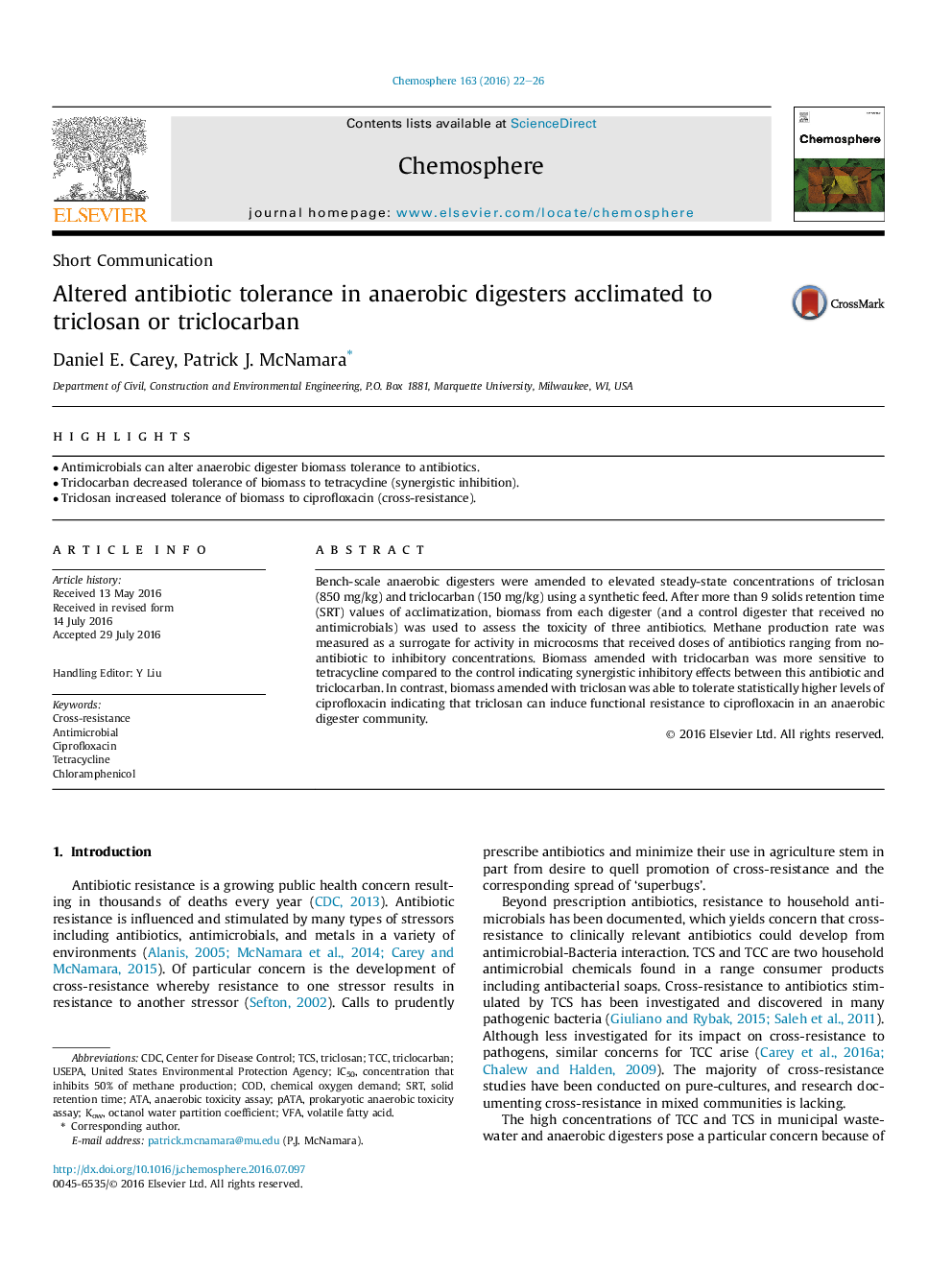| Article ID | Journal | Published Year | Pages | File Type |
|---|---|---|---|---|
| 6306320 | Chemosphere | 2016 | 5 Pages |
Abstract
Bench-scale anaerobic digesters were amended to elevated steady-state concentrations of triclosan (850Â mg/kg) and triclocarban (150Â mg/kg) using a synthetic feed. After more than 9 solids retention time (SRT) values of acclimatization, biomass from each digester (and a control digester that received no antimicrobials) was used to assess the toxicity of three antibiotics. Methane production rate was measured as a surrogate for activity in microcosms that received doses of antibiotics ranging from no-antibiotic to inhibitory concentrations. Biomass amended with triclocarban was more sensitive to tetracycline compared to the control indicating synergistic inhibitory effects between this antibiotic and triclocarban. In contrast, biomass amended with triclosan was able to tolerate statistically higher levels of ciprofloxacin indicating that triclosan can induce functional resistance to ciprofloxacin in an anaerobic digester community.
Keywords
VFApATAOctanol water partition coefficientATATCCsRTIC50CDCTCSUnited States Environmental Protection Agencyvolatile fatty acidTetracyclineTriclosanTriclocarbanAnaerobic toxicity assaychemical oxygen demandSolid retention timeCiprofloxacinAntimicrobialCenter for Disease ControlCross-resistanceCodChloramphenicolKowUSEPA
Related Topics
Life Sciences
Environmental Science
Environmental Chemistry
Authors
Daniel E. Carey, Patrick J. McNamara,
